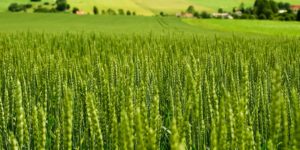Pigeon peas, cajanus cajan is a perennial legume in the family fabaceae grown for its edible pods and seeds. Since domestication 3500 years ago,its seeds have become common food across the world.The crop produces flowers at racemes of 5-10 flowers . seeds are flat and a pod may contain between 2-9 pods depending on variety and growth conditions.
Growth requirements
Pigeon peas grows well in hot humid climates with temperatures of between 18 and 38 degrees centigrade.
Pigeon grow in wide range of soils from sandy to clay soils, optimum growth is in well drained soils with ph of between5.0 and 7.0.its tolerant to drought and can survive for long with little rains.
Propagation
Pigeon pea is propagated by seeds directly which should be sown in prepared land. Planting is always recommended to a depth of 2.5-10cm , 30-50cm between plants and 150 cm between rows. 20-100.
Crop pests and diseases
Diseases
Bacterial leaf spot and stem canker-this a bacterial infections affecting the leaves and the stem causing leafspots and cankers respectively. Best controlled by copper based fungicidal sprays. Use TRINITY GOLD 50G/20 LTS.
Halo blight-another bacterial infection causing blight on leaves. This are brown patches of dead tissue with an halo concentric ring round them. Control by TRINITY GOLD 50G/20LTS.
Alternaria blight-fungal infection leading to burnt leaf surfaces. Controlled by TRINITY GOLD 50G/20 lts.
Antracnose and cercospora leafspot-affects both leaves and pods. Best controlled by using TRINITY GOLD 50G/20 LTS.
Powdery mildew-fungal infection characterised by powdery white substance on leaf surface. Controlled by TRINITY GOLD 50G/20 LTS OR CHARIOT 20ML/20LTS.
PESTS
POD BORERS-most important pest of pea with damage causing more than 80% yield loss. Larvae feed on pods flowers while adult bores into pods and seeds. Controlled by PENTAGON 10ML/20 LTS.
POD FLIES-white adults fly,lay eggs and developing maggots bore and feed inside the pods. Use PENTAGON 10ML/20 LTS OR PROFILE 440EC 30ML/20 LTS.
POD BUGS-both adults and nymph suck the plant sap from flower buds and developing seeds through the pod wall.Attached seeds are dark and inside become shrivelled. Best controlled by PENTAGON 10ML/20 LTS +INTEGRA 3ML/20LTS.
BLISTER BEETLES-also called flower feeders, they feed on flowers and reduce the number of pod setting hence affecting crop yield. Best controlled by PENTAGON 10ML/20 LTS OR LEXUS 8ML/20 LTS. INTEGRA sticker is necessary .
PIGEON NUTRITION
During vegetative and flowering phase, its necessary to spray Lavender total a complete foliar fertilizer to aid vegetation and tillering.
Application of optimizer is also necessary to enhance vigour, and flowering.






